Every time I travel I seem to have odd frustrations or difficulties. Maybe not big ones, but traveling in Europe, especially traveling in old-world countries where you’re staying in old hotels or inns that aren’t Hiltons, or even European mega-hotels, you’re going to find oddities in every place you stay. Here’s my little bit of (sage?) advice. Every trip, I come home with things I need to remember for the next trip.
1. European countries don’t all use the same plugs. I knew that – I’ve traveled abroad many, many times. And there’s a difference between an adapter and a converter – I only needed an adapter as all my electronics are low voltage so I didn’t need to convert from 220. So, I took just one adapter plug which I’d purchased recently that SAID it would work in all plugs in Europe (except Britain). Wrong. Britain has its own very big cumbersome plug. We didn’t go to Britain so I was fine with that part. But even in mainland Europe, you’ll find three different kinds of plugs –  the old 2-prong, and a newer thick bodied indented 2-prong with a ground and a 3-prong type in Switzerland only. I had the one with the ground, and I didn’t take the old-fashioned little 2-prong one. I didn’t have the Switzerland one, but the 2-prong did work in one plug in each hotel in the 3-prong plug. But even if you DID have the 2 (or 3) different kinds of plugs used mostly in Europe, it was problematical everywhere I went, to find an outlet. The photo at right I found on the internet – not sure what the red X’s meant, but wanted you to get an idea about the so very different configurations! Also, old hotels don’t have many outlets. Sometimes you have to move furniture to find where the lamp was plugged in, for instance. Sometimes the only outlet that would charge was in the bathroom. But some of those were only for razors and NOT electronic devices. But then, sometimes I’d find my iPhone just wouldn’t charge. The lamp worked, but it wouldn’t work to charge a phone. Rick Steves had one very clever idea – use some duct tape to hold your American plug into the adapter, so you don’t accidentally leave behind your adapter plug. I only took 4 electronic devices (iPhone, iPod – that I listen to when I’m trying to go to sleep, my Kindle and my Canon battery charger). All had different cables and outlets. So Rick Steves’ advice wouldn’t have worked since I had to switch them every day or two. Two of the adapters connected to a USB, so I took my one Apple USB square plug that fit into the adapter. My problem was that my adapter was the wrong type in most of the hotels. Fortunately, Tom (Joan’s husband) let me use his and when he flew home from Rome, he handed it to me and I was able to use it the remainder of the trip. It was a multi-purpose plug and you turn a knob and out pop different kinds of plug configurations. I think I have one of those somewhere here at home in my big overflowing travel drawer – but obviously I hadn’t taken it along! Just one more thing to remember. Here’s a link to a website that gives very specific info about plugs. Do ask at the hotel front desk for plugs – sometimes they offer them.
the old 2-prong, and a newer thick bodied indented 2-prong with a ground and a 3-prong type in Switzerland only. I had the one with the ground, and I didn’t take the old-fashioned little 2-prong one. I didn’t have the Switzerland one, but the 2-prong did work in one plug in each hotel in the 3-prong plug. But even if you DID have the 2 (or 3) different kinds of plugs used mostly in Europe, it was problematical everywhere I went, to find an outlet. The photo at right I found on the internet – not sure what the red X’s meant, but wanted you to get an idea about the so very different configurations! Also, old hotels don’t have many outlets. Sometimes you have to move furniture to find where the lamp was plugged in, for instance. Sometimes the only outlet that would charge was in the bathroom. But some of those were only for razors and NOT electronic devices. But then, sometimes I’d find my iPhone just wouldn’t charge. The lamp worked, but it wouldn’t work to charge a phone. Rick Steves had one very clever idea – use some duct tape to hold your American plug into the adapter, so you don’t accidentally leave behind your adapter plug. I only took 4 electronic devices (iPhone, iPod – that I listen to when I’m trying to go to sleep, my Kindle and my Canon battery charger). All had different cables and outlets. So Rick Steves’ advice wouldn’t have worked since I had to switch them every day or two. Two of the adapters connected to a USB, so I took my one Apple USB square plug that fit into the adapter. My problem was that my adapter was the wrong type in most of the hotels. Fortunately, Tom (Joan’s husband) let me use his and when he flew home from Rome, he handed it to me and I was able to use it the remainder of the trip. It was a multi-purpose plug and you turn a knob and out pop different kinds of plug configurations. I think I have one of those somewhere here at home in my big overflowing travel drawer – but obviously I hadn’t taken it along! Just one more thing to remember. Here’s a link to a website that gives very specific info about plugs. Do ask at the hotel front desk for plugs – sometimes they offer them.
2. When you travel in Europe, eating out mostly, it’s hard to get vegetables. I love vegetables. No, I’m not a vegetarian at all. But just as we have the same problem here in the U.S., not many restaurants offer side vegetables. Often entrees are served with just meat and a carb. No veggies. So, you have to expect the same in Europe. It’s hard to get veggies. Salads are available – and we ate them in abundance in many cities we visited. Veggies were harder to find and if you do find them, they’re often a fried appetizer (not my favored way to eat them). My advice: if you have any kind of problem with getting sufficient fiber in your diet, take along something over-the-counter.
3. Don’t forget Pepto Bismol or Imodium. I took a package of the latter along just in case, but then I gave it all to Cherrie when she got sick in Switzerland. Fortunately I didn’t need it, but as soon as I got home I came down with an intestinal bug. I made a quick trip to the drug store. Cherrie and I both arrived home with some kind of bug. Not from food because it didn’t begin until 18-24 hours after our last meal in Paris. It was a kind of bacterial flu bug, I guess. I’m still under the weather as I write this 7 days after getting home. Some doctors will now give you a prescription for Cipro when you’re going to travel, a heavy-duty, multi-use antibiotic. I didn’t have any and would be reluctant to use it unless I was very sick. It’s a very strong drug. Cherrie visited her dr. a couple of days ago and she told her not to use Imodium because it can easily be over-done and then you have the reverse problem. Her dr. recommended Pepto instead, which you can buy in liquid (probably not the best choice when when traveling), capsules or chewables.
4. Only a few hotels have room safes unless you’re staying in very high end hotels. Mostly I wasn’t. My cell phone went with me everywhere, even though I left it turned off a lot of the time. And my Kindle slipped into my purse most days. The only item I left in my hotel room was my iPod which I hid as best I could. Someone mentioned on our trip that hotel safes aren’t all that “safe” either. I bought a new purse for this trip – a nice-enough Brighton (black fabric, flat) that had room for my iPhone and my Kindle. I wore it cross-body, which most people do anyway. I kept it zipped up and never had anything valuable in the outside compartments or zippered slots. We actually never encountered any gypsies on this trip, which was very unusual. We saw a few homeless sitting on the ground with a money cup, but that was it, and only in Paris.
5. Be sure to have some money in local currency. On this trip I only needed euros and Swiss francs. I found an envelope in my travel stuff with about 40 euros in it. That meant I didn’t have to find a money exchange or an ATM at the airport. Sometimes at the airport there are long lines. Currently, the best “deal” according to advice websites, is to use ATM machines to get money, which I did exclusively. In Europe, ATM machines are everywhere (only exception might be a very tiny village). And some banks are now offering no-fee international ATM usage. I think Capitol One is one of them, and USAA, I’ve heard. When I left Switzerland, I used my last Swiss francs as part of the hotel bill, and the balance was charged to my credit card. (Oh, and by the way, American Express is often refused at hotels and restaurants all across Europe. I may be giving up my AE card when Costco’s AE membership credit card will no longer work next year.) I came home with about another 40 euro. That will go back into my safe for my next trip. Or I’ll sell them to Cherrie who is going on a 7-week family trip to Europe in about 4-5 weeks. Don’t buy foreign currency at a bank here at home. They rip you off on the conversion.
6. Every hotel/inn we stayed in, including our apartment in Lyon, had hair dryers. That was a big boon. Even small hair dryers take up lots of suitcase space. And extra suitcase space we did NOT have! If they didn’t have one in the room, all we had to do was ask at the front desk and they’d hand us one.
 7. We all traveled with one 21-inch spinner suitcase and a carry-on. This is a newer size, with 4 spinner-wheels. And it’s a deeper suitcase. If you think 21-inches, you may be gasping that no, you couldn’t possibly. But these new ones really are deeper and some have a zipper extension you can use also. I can’t tell you how great this was. A very worthwhile investment. Mostly they’re made to fit in the overhead as carry-on baggage. Another important reason is that European cars have short trunk space. When we rented cars in Italy and Switzerland, we had station wagons in both places (non-standard – thanks to Tom who arranged both rental cars for us). In the rear we were able to fit all 4 of the 21-inch suitcases and 2 of the carry-ons (3 straight in, one sideways across the back and 2 carry-ons stuffed in). Joan had a backpack that sat at her feet, and my carry-on was flat on top, so it became the armrest in the middle in the back seat. If you’re traveling alone, you’ll have no difficulty. But with 4 of us, it made for a bit of squeezing. We all took a similar bag and a carry-on. (We had a meeting about this before we left the U.S. because I knew from previous trips that trunk space was going to be a problem with any rental car.) My carry-on slipped over the handle extension of my suitcase. On my flight home, when I packed my heavier raincoat and my minor purchases into the suitcase, it was very tight. So, I did unzip the extender. In that configuration, my suitcase would easily tip over frontwards, but once I plopped the carry-on on top, it would stay upright. Two of us had red bags. The 4-spinner wheels made for very easy walking long distances from terminal to terminal and mostly, once we arrived at a new destination. I checked my suitcase – I never intended to take it on board a plane – because I had in my suitcase several liquids that were more than 1.3 ounces (sun screen, shampoo, aerosol hairspray, etc.) which are no-nos. We also walked distances from our car into hotels, or when we did train travel, from taxi to platforms, platform to taxi. Those spinner bags are now a necessity in my book. FYI: For my 22 days abroad, for my clothing, this including what I was wearing: I had 3 pairs of slacks, 8 tops [including the thermal undershirt and one slightly more dressy kind of top], underwear for 5 days, a pullover sweater, vest, raincoat with hood [no umbrella], 3 thin “pretty” scarves, 1 pair of leggings, 1 pair of thermal leggings, 1 longer sleep t-shirt, 2 pairs of socks, 1 extra pair of shoes, 1 warm neck scarf and 1 pair of gloves – that I wore only 1 day. I wore everything except the thermal leggings. Next trip I’ll forget the leggings, all but 1 dressy scarf, replace the raincoat with a thermal windbreaker of some kind. I washed underwear and socks often but they all dried overnight with no difficulty. Thank goodness for heated towel racks in a couple of places. If the trip would be in warm weather that would change significantly the packing needs, obviously.
7. We all traveled with one 21-inch spinner suitcase and a carry-on. This is a newer size, with 4 spinner-wheels. And it’s a deeper suitcase. If you think 21-inches, you may be gasping that no, you couldn’t possibly. But these new ones really are deeper and some have a zipper extension you can use also. I can’t tell you how great this was. A very worthwhile investment. Mostly they’re made to fit in the overhead as carry-on baggage. Another important reason is that European cars have short trunk space. When we rented cars in Italy and Switzerland, we had station wagons in both places (non-standard – thanks to Tom who arranged both rental cars for us). In the rear we were able to fit all 4 of the 21-inch suitcases and 2 of the carry-ons (3 straight in, one sideways across the back and 2 carry-ons stuffed in). Joan had a backpack that sat at her feet, and my carry-on was flat on top, so it became the armrest in the middle in the back seat. If you’re traveling alone, you’ll have no difficulty. But with 4 of us, it made for a bit of squeezing. We all took a similar bag and a carry-on. (We had a meeting about this before we left the U.S. because I knew from previous trips that trunk space was going to be a problem with any rental car.) My carry-on slipped over the handle extension of my suitcase. On my flight home, when I packed my heavier raincoat and my minor purchases into the suitcase, it was very tight. So, I did unzip the extender. In that configuration, my suitcase would easily tip over frontwards, but once I plopped the carry-on on top, it would stay upright. Two of us had red bags. The 4-spinner wheels made for very easy walking long distances from terminal to terminal and mostly, once we arrived at a new destination. I checked my suitcase – I never intended to take it on board a plane – because I had in my suitcase several liquids that were more than 1.3 ounces (sun screen, shampoo, aerosol hairspray, etc.) which are no-nos. We also walked distances from our car into hotels, or when we did train travel, from taxi to platforms, platform to taxi. Those spinner bags are now a necessity in my book. FYI: For my 22 days abroad, for my clothing, this including what I was wearing: I had 3 pairs of slacks, 8 tops [including the thermal undershirt and one slightly more dressy kind of top], underwear for 5 days, a pullover sweater, vest, raincoat with hood [no umbrella], 3 thin “pretty” scarves, 1 pair of leggings, 1 pair of thermal leggings, 1 longer sleep t-shirt, 2 pairs of socks, 1 extra pair of shoes, 1 warm neck scarf and 1 pair of gloves – that I wore only 1 day. I wore everything except the thermal leggings. Next trip I’ll forget the leggings, all but 1 dressy scarf, replace the raincoat with a thermal windbreaker of some kind. I washed underwear and socks often but they all dried overnight with no difficulty. Thank goodness for heated towel racks in a couple of places. If the trip would be in warm weather that would change significantly the packing needs, obviously.
8. Don’t pack heavy stuff in your carry-on. There’s a lot of walking involved in airports these days, and especially for international travel. It’s just the way it is. And if you travel much, you already know there are long security lines as well. My carry-on is just a fabric type with 2 handles and a shoulder strap. I carried my cosmetics (all items within the 1.3 ounce limit) in there. And my travel pillow. My important travel docs for all the trip planning I’d done for Switzerland. And a paperback book (just in case my Kindle had a problem or during the time when you can’t use electronic devices). My purse actually would fit in there as well, and I took this other cute plane-purse thing that I hung at my airplane seat (see #10 below).
9. Traditional raincoats are out. I took a black London Fog raincoat that has a semi-fuzzy lining (not removable). Everyone else wore a kind of a padded, warm windbreaker style, and I’d say that 98% of everyone we saw in all 3 countries were wearing the same. So my regular raincoat will go into the rarely-used jacket closet henceforth. For my next cooler-weather trip I’ll probably need to buy something new. Some designers now make a thin puffy-coat that mushes down to next to nothing and fits into a small square and packs easily. Darlene had one she bought at Nordstrom.
10. My Samantha Brown packing system was great. And particularly I loved the small purse that you use on the airplane (which can be used as a regular purse on your travels; it’s small, though). There’s a photo I found on ebay for one sold separately. To buy new, you  have to buy the whole set: Burgundy Samantha Brown 6-piece Travel Survival Kit
have to buy the whole set: Burgundy Samantha Brown 6-piece Travel Survival Kit . There are many colors (mine was bright red I bought at HSN) to choose from. I used all the pieces which are a heavy-duty water-resistant polyester, I suppose. But I particularly loved the little 7×8” purse that you hook onto the airline seatback in front of you. It held: my Kindle, my lip moisturizer, a little vial of Tylenol, a tiny bag of snack food, Kleenex and my prescriptions I would need to take in flight. There would be room for a tiny bottle of water, but only if I removed the Kindle. The other pieces in the set (that goes into the suitcase) include two sleeves for slacks or other clothes, an underwear bag with a “wear me” on one side, and “wash me” on the other – easy to keep everything in one place and you knew each day how many clean clothes you had left. The thicker cube was for tops/shirts. I was able to fit 8 of them in there. Unpacking my suitcase was a real breeze – sometimes I did that and put the packs/cubes into a drawer or shelf. Other times, one-night-stays, I left everything intact and it made for very neat and quick re-packing. I like the system. In a bright color there was no way I’d forget it. I’m very impressed with the Samantha Brown packing system. I also bought the accessories kit – one additional packing case that contains 3 small cubes inside. In there I stored my charging cables, my adapter plug, my camera battery charger, scarves, jewelry and a Ziploc bag with all of my miscellaneous small liquid things I needed (hair gel, extra shampoo, the aerosol hairspray, body lotion – a few hotels didn’t provide any – and my moderate sized tube of sun screen that I need to wear every day because I’m so fair skinned). And also the two small pieces of jewelry I took and barely wore.
. There are many colors (mine was bright red I bought at HSN) to choose from. I used all the pieces which are a heavy-duty water-resistant polyester, I suppose. But I particularly loved the little 7×8” purse that you hook onto the airline seatback in front of you. It held: my Kindle, my lip moisturizer, a little vial of Tylenol, a tiny bag of snack food, Kleenex and my prescriptions I would need to take in flight. There would be room for a tiny bottle of water, but only if I removed the Kindle. The other pieces in the set (that goes into the suitcase) include two sleeves for slacks or other clothes, an underwear bag with a “wear me” on one side, and “wash me” on the other – easy to keep everything in one place and you knew each day how many clean clothes you had left. The thicker cube was for tops/shirts. I was able to fit 8 of them in there. Unpacking my suitcase was a real breeze – sometimes I did that and put the packs/cubes into a drawer or shelf. Other times, one-night-stays, I left everything intact and it made for very neat and quick re-packing. I like the system. In a bright color there was no way I’d forget it. I’m very impressed with the Samantha Brown packing system. I also bought the accessories kit – one additional packing case that contains 3 small cubes inside. In there I stored my charging cables, my adapter plug, my camera battery charger, scarves, jewelry and a Ziploc bag with all of my miscellaneous small liquid things I needed (hair gel, extra shampoo, the aerosol hairspray, body lotion – a few hotels didn’t provide any – and my moderate sized tube of sun screen that I need to wear every day because I’m so fair skinned). And also the two small pieces of jewelry I took and barely wore.
11. If you’re so inclined, do get a Global Entry pass. It costs $100 for 5 years (and takes about 4-6 weeks to get it, including an in-person interview at only some border patrol locations set up around the U.S., to do the Global Entry screening), and probably isn’t worth it if you don’t do a moderate amount of travel. And it doesn’t help anywhere but in the United States (leaving and returning) so it didn’t help as we arrived in Italy, left Italy, arrived in Switzerland, or flew out from Paris) but it was SO fast getting through passport control at LAX, both departing and returning. On our return, they have kiosks now in the international area (more for Global Entry pass holders and fewer for those who don’t). You slide your passport in and it snaps a photo of you, you tick a few things on the screen and it’s a breeze. We walked right through and out to baggage pickup.
12. It used to be that Europeans wore dark clothes about 8 months of the year. Not so anymore. My wardrobe was all planned around black and brown, mostly black. My coat was black. My sweater was black. My vest was black. Two of my tops were plain black. We saw people wearing all kinds of colors and nobody stared like they used to. I can remember on previous trips feeling embarrassed because I was wearing even a brightly designed (maybe still in black/brown and white) blouse. Now everybody wears just about anything. Although we didn’t see white pants or even light color slacks. But everyone wore brighter colors in shirts and tops. And coats were in every color of the rainbow (except white).
 13. My favorite 2 pieces of clothing were my velour vest and my Land’s End Thermaskin short-sleeved undershirt. I wore them both about 16 of the 22 days I was gone. The black thin undershirt (pictured right – and it also comes in white) was perfect for cooler days and has a longer length so it keeps tucked in, and I think I’ll be wearing it lots here at home on colder winter days. If I wore a v-neck top over it, it looked fine if the scoop neck showed. The vest I’ve had for years – it’s a longer style so my tops didn’t hang down below (even though that’s very current style), and it was fuzzy enough to provide lots of warmth if I zipped it up. I also took the Thermaskin leggings, but I never wore them.
13. My favorite 2 pieces of clothing were my velour vest and my Land’s End Thermaskin short-sleeved undershirt. I wore them both about 16 of the 22 days I was gone. The black thin undershirt (pictured right – and it also comes in white) was perfect for cooler days and has a longer length so it keeps tucked in, and I think I’ll be wearing it lots here at home on colder winter days. If I wore a v-neck top over it, it looked fine if the scoop neck showed. The vest I’ve had for years – it’s a longer style so my tops didn’t hang down below (even though that’s very current style), and it was fuzzy enough to provide lots of warmth if I zipped it up. I also took the Thermaskin leggings, but I never wore them.
14. Be prepared for duvets everywhere. I’m not a duvet person. They make me too warm, so I’m continually having to stick my feet out or fold back the duvet to cool off. I know there are different weights of duvets, but every single place we stayed had fairly heavy duvets. So if you’re a warm person, you might want to pack very light pajamas or sleep in the buff. I took a long tee-shirt as my sleepwear. I lost a lot of sleep being awakened in a heat, and no, I don’t think they were hot flashes. None of the hotels had blankets in the closet, or I’d have tossed that duvet off and used one. Not a big deal, but it did bother me some. When possible, I opened windows to keep the room really cold at night. That helped. In some places my hotel room overlooked a busy square or a trattoria or bistro, and opening the window wasn’t feasible or I’d have been awake all night, but in most places I could. Or I adjusted the heat to very low, if I could, and that also helped.
15. Use small bags or Ziplocs for different toiletry types. I’ve decided that small little bags or Ziploc bags work best for the different kinds of toiletries needed. I have a great little cushy cinch-up thing for my make-up. But everything else needs to be divided up into bags or Ziplocs by use: shower (shampoo, gel, hairspray, body lotion), night-time (prescriptions, eye makeup remover, lip protector and my nasal spray) and morning (prescriptions, lotion, sunscreen). I have amongst my travel things 2 large box-shaped padded things for toiletries, but they’re bulky. I found the smaller things worked better. I have oodles of little zipped bag things I’ve gotten from cosmetic give-aways – they work well, or just the quart-sized heavier-duty Ziploc bags make for easy squishing here and there to fit in the suitcase. This is especially true if you’re trying to squeeze everything into a 21-inch bag. If you’re using Ziploc bags, put a yellow piece of paper in the morning one, a blue one in the shower bag, and a black one for night-time. Very easy to see which one is which. Since we 4 women were traveling together and shared one bathroom in the apartment in Lyon, France, we all had to keep our toiletries neat and tidy. We just picked up our baggies or whatever(s) and took them back to our bedrooms so the bathroom counter space (minimal) wasn’t clogged up with our stuff.
16. Take snacks and a water bottle every day. Not that you have to bring snacks from home necessarily (although I wished I’d had a few protein bars along on this trip) . . . but stop at a grocery store and find some kinds of snacks that will work for you and your family. Have one in your “day pack” or purse for those times when there just aren’t any restaurants nearby and you’re famished. Also, take along a small water bottle. Sometimes hotels offer a free bottle – take it and refill it each day (I know, they say that’s not a good thing, but hey, this is just one trip) so you have it with you, or in the car. If you have children, definitely have water and snacks available. I had a few Trader Joe’s dark chocolate bars in my suitcase, and I shared them with everyone now and then. One little square helped me get through to a later meal. Nuts would have worked also.
17. Figure out what kind of international cell phone plan you want to use. Now, I’m no expert, but after being with Tom & Joan for 8 days with 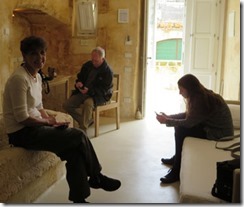 Tom having a portable hotspot in his pocket, all of us got spoiled really fast with having internet most of the time. When Tom and granddaughter Lauren flew home, Joan and I were sad! The hotspot Tom had, only worked in Italy and he rented it for a short time span anyway. Next time I travel, I’ll be getting myself a portable hotspot. Not that it will work for my next trip (Botswana and Dubai next fall) but it will work in most places for most trips except remote areas in Africa (a guess). I purchased a small, special plan with my wireless carrier, but as good as I am with techie stuff, I had no idea exactly what I was getting (and I don’t have my bill yet to know what I did use) I wasn’t sure it was the wisest. Every hotel offered free wi-fi. Here’s one photo I took in the town of Matera, in Tom & Joan’s cave hotel room (the door is open because the light through the door was all we had, other than soft indirect lighting). We’d just checked in and all of us were on our phones checking for texts and email. This happened every single day of the trip! I don’t think I’ve mentioned yet that in France, wi-fi is pronounced wee-fee. You can purchase/rent short-term phones in Europe, but they’re a new number and I didn’t expect to get any phone calls. Although I did get one from my opthalmologist’s office wanting to ask me a question or two – this at 3 am Europe time. I didn’t think to turn my phone completely off at night. There are plenty of websites that will give you advice about how to handle this – there are so many options. Too many. Some cell phones don’t work in Europe, either, so that’s another factor.
Tom having a portable hotspot in his pocket, all of us got spoiled really fast with having internet most of the time. When Tom and granddaughter Lauren flew home, Joan and I were sad! The hotspot Tom had, only worked in Italy and he rented it for a short time span anyway. Next time I travel, I’ll be getting myself a portable hotspot. Not that it will work for my next trip (Botswana and Dubai next fall) but it will work in most places for most trips except remote areas in Africa (a guess). I purchased a small, special plan with my wireless carrier, but as good as I am with techie stuff, I had no idea exactly what I was getting (and I don’t have my bill yet to know what I did use) I wasn’t sure it was the wisest. Every hotel offered free wi-fi. Here’s one photo I took in the town of Matera, in Tom & Joan’s cave hotel room (the door is open because the light through the door was all we had, other than soft indirect lighting). We’d just checked in and all of us were on our phones checking for texts and email. This happened every single day of the trip! I don’t think I’ve mentioned yet that in France, wi-fi is pronounced wee-fee. You can purchase/rent short-term phones in Europe, but they’re a new number and I didn’t expect to get any phone calls. Although I did get one from my opthalmologist’s office wanting to ask me a question or two – this at 3 am Europe time. I didn’t think to turn my phone completely off at night. There are plenty of websites that will give you advice about how to handle this – there are so many options. Too many. Some cell phones don’t work in Europe, either, so that’s another factor.
All of these words of (my) wisdom are just my two cents worth. Merely FYI.





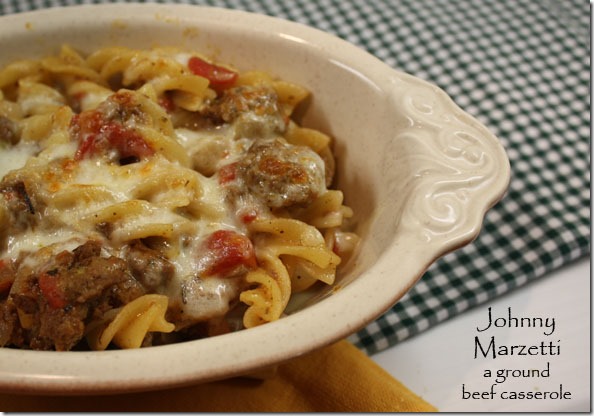

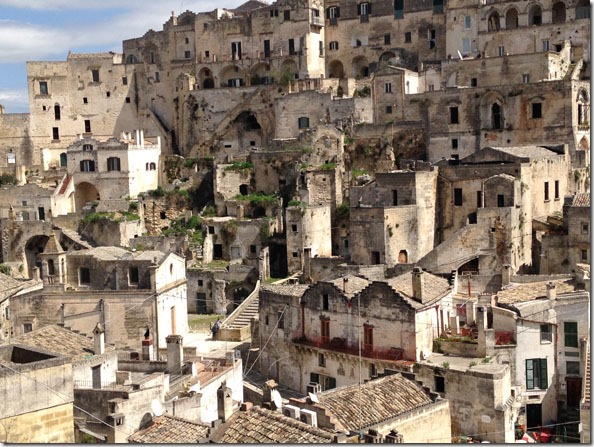
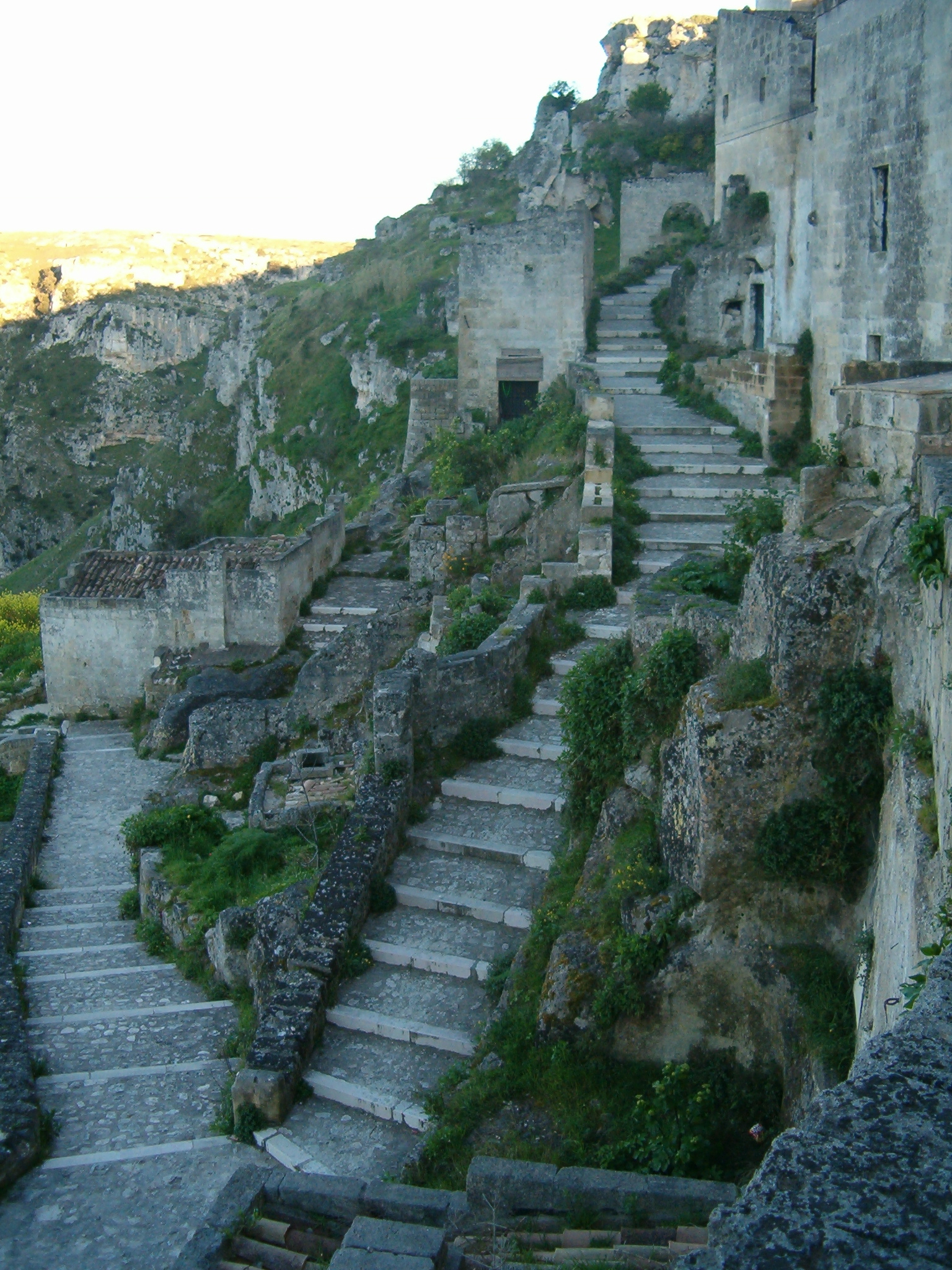
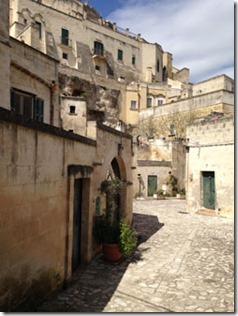


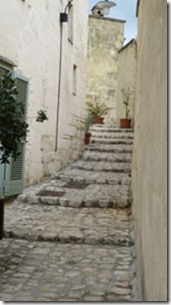
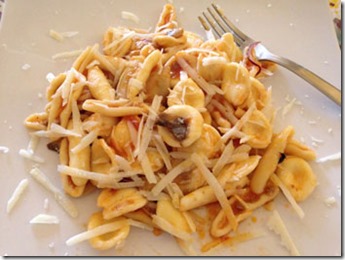
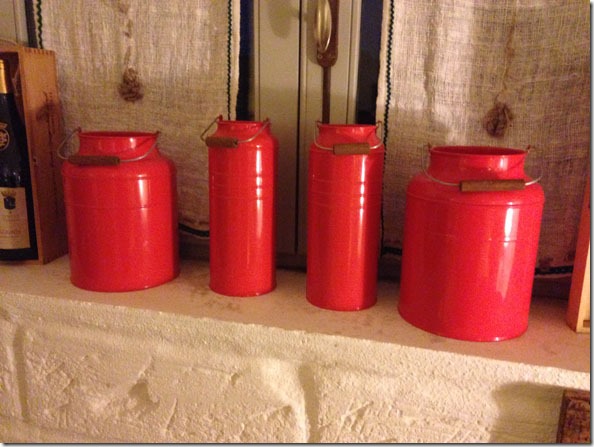

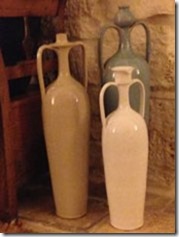


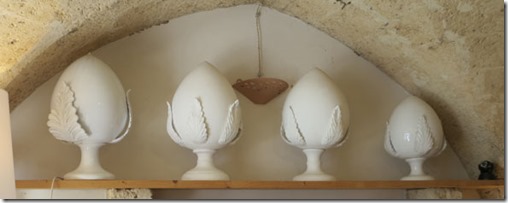


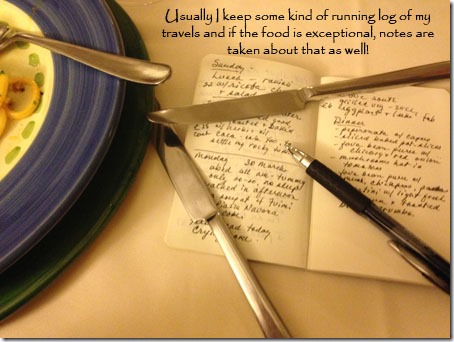
 I’ve ever seen fresh fava beans.
I’ve ever seen fresh fava beans.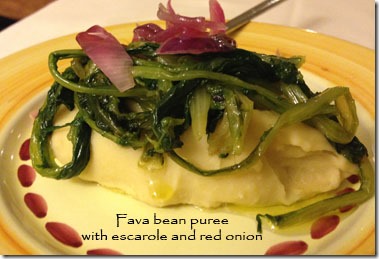
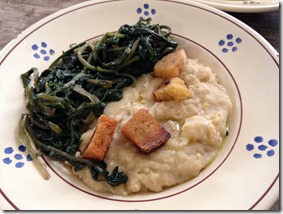
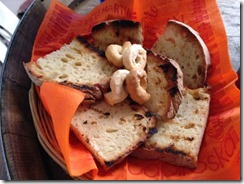
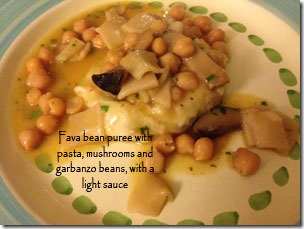
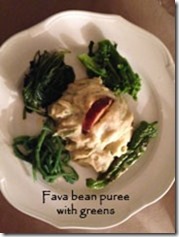
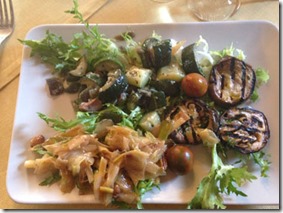
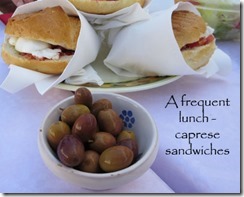
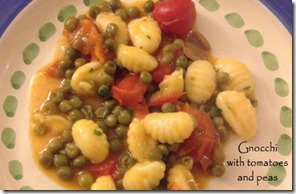

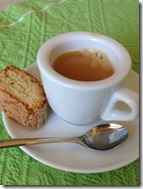


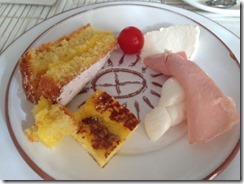

 13.
13. 
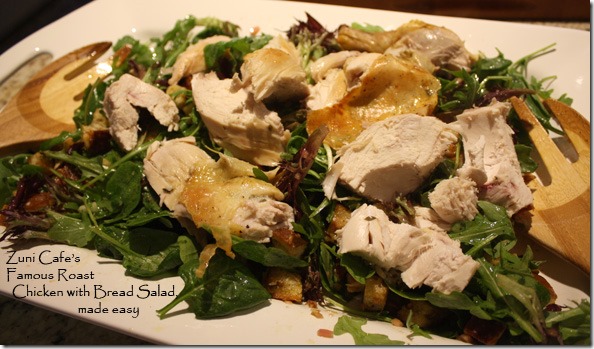
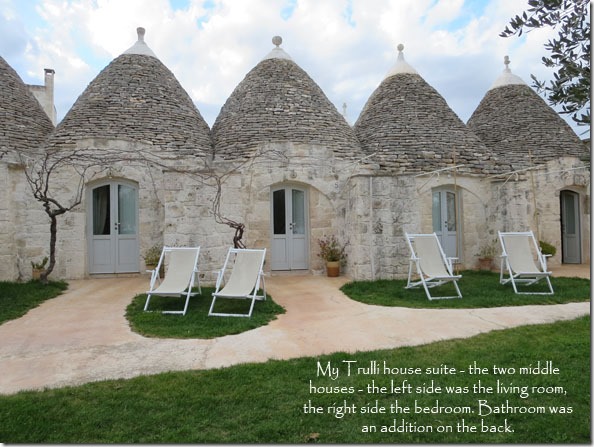

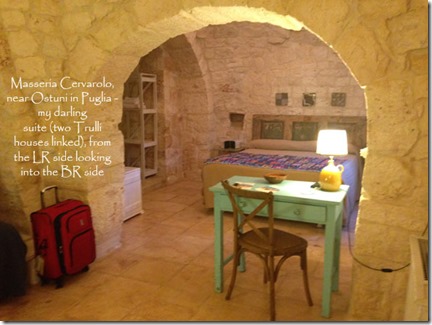


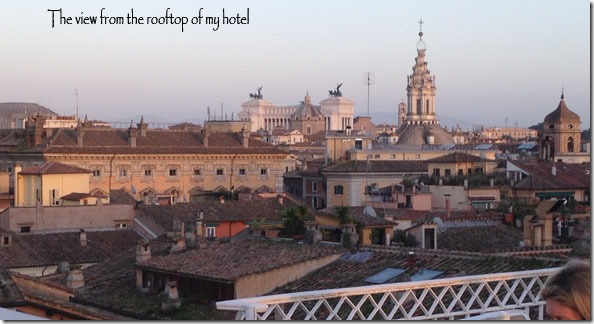
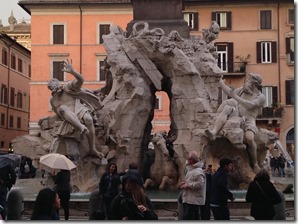
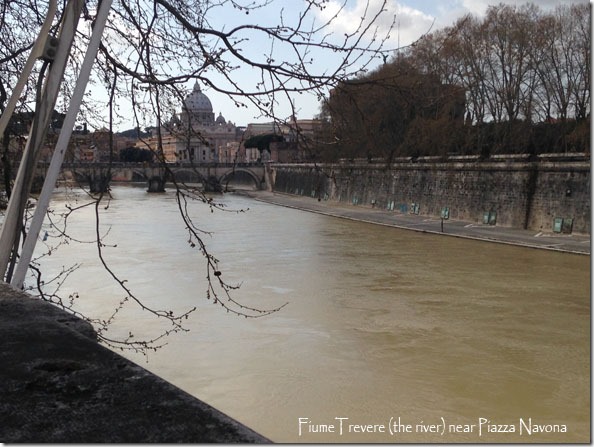
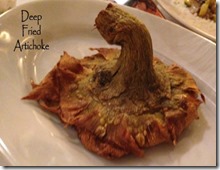
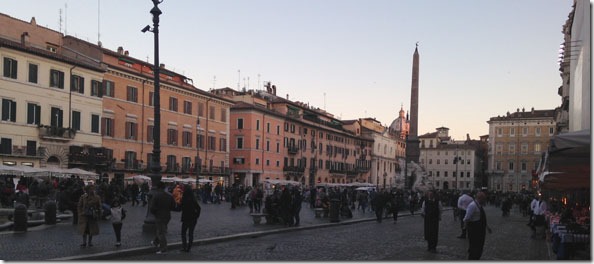
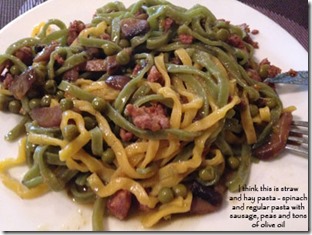
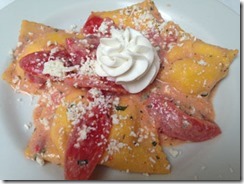
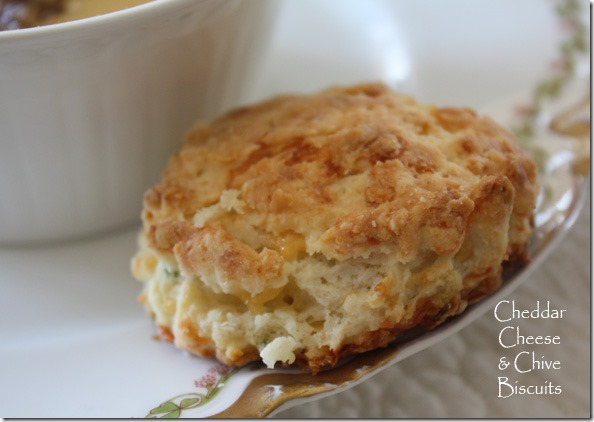
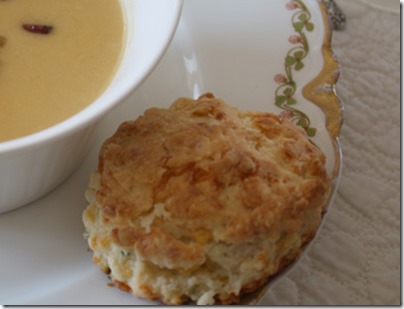

Leave a Comment!